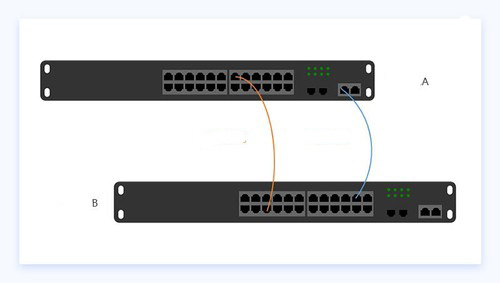Industrial Switch is also called industrial Ethernet switch, that is, Ethernet switch equipment applied in industrial control field. Because of the network standard adopted, its openness, wide application, low price and transparent and unified TCP / IP protocol, Ethernet has become the main communication standard in industrial control field. The industrial switch has multiple ports, and each port has a bridging function. It can connect a LAN or a high-performance server or workstation, which is very powerful.
As we all know, there are generally three connection modes of industrial switches: cascade, stack and cluster. The cascade technology of switches is generally used to realize the interconnection between multiple switches; Stack technology is used to form multiple switches into a unit, so as to improve greater port density and higher performance; Cluster technology is used to manage multiple switches connected to each other as a logical device, so as to reduce network management costs and simplify management operations.
Industrial switch cascade
Cascade can be defined as two or more switches connected to each other through a certain way. As required, multiple switches can be cascaded in various ways. In larger local area networks such as campus networks, multiple switches generally form a bus, tree or star cascade structure according to their performance and use.

Characteristics of industrial switch cascade:
1. Use RJ-45 port of industrial switch to realize;
2. The cascade cable is the standard category 5 twisted pair;
3. The cascading distance is long, up to 100 meters at 10 megahours and up to 5 meters at 100 megahours;
4. Industrial switches of different manufacturers can be cascaded;
Metropolitan area network (MAN) is an excellent example of switch cascade. At present, telecom departments in various places have built broadband IP man in many prefecture level cities. These broadband man are generally divided into three layers from top to bottom: core layer, aggregation layer and access layer. The core layer generally adopts Gigabit Ethernet technology, the aggregation layer adopts 1000m / 100M Ethernet technology, and the access layer adopts 100M / 10M Ethernet technology, which is called '40g to the building, 10g to the floor, and Gigabit to the desktop'.
In fact, the broadband man with this structure is composed of many switches cascaded at all levels. The core switch (or router) is connected to several aggregation switches, the aggregation switch is connected to several cell center switches, the cell center switches are connected to several building switches, and the building switches are connected to several floor (or unit) switches (or hubs).
When cascading, it should be noted that in principle, Ethernet switches of any manufacturer and model can be cascaded, but it is not excluded that two switches cannot be cascaded in some special cases. There is a limit to the number of cascaded layers between switches. The most fundamental principle for successful cascading is that the distance between any two sites cannot exceed the maximum span of the media segment. When multiple switches are cascaded, it should be ensured that they all support spanning tree protocol, which not only prevents loops from appearing in the network, but also allows redundant links to exist.
When cascading, we should also try our best to ensure that the relay link between switches has sufficient bandwidth, so we can use full duplex technology and link aggregation technology. When full duplex technology is adopted for switch ports, not only the throughput of corresponding ports is doubled, but also the relay distance between switches is greatly increased, which makes it possible to cascade multiple switches distributed in different places and at a relatively long distance.
The cascade of switches can be realized through RJ-45 port. The cascade can be completed between any network equipment and the home switch, or between the switch and the hub through a twisted pair; The switches cascaded to each other are logically independent, and each switch must be configured and managed in turn; At the same time, industrial switches of different manufacturers can be cascaded with each other, and there is no limit on the number of cascades in theory. However, the switch cascade has a long delay because the signal from one switch to another passes through the port and goes through the encoding / decoding process; At the same time, it must occupy two ports (one for each switch); Users will lose the performance / price ratio, which is more obvious for industrial switches with higher port costs.
So in general, the advantage of industrial switch cascade is that it can extend the network distance. In theory, it can extend the network distance infinitely through twisted pair and multi-level cascade. After cascade, there are still many different network devices in the process of network management. In addition, cascading is basically not limited by equipment, and industrial switches of different manufacturers can be cascaded at will. The disadvantage of cascading is that cascading multiple devices will produce cascading bottlenecks. For example, two 100MB switches are cascaded through a twisted pair, and their cascade bandwidth is 100MB, so computers between different switches can only communicate through this 100MB bandwidth.
Contact: sales
Phone: 18688787693
E-mail: sales@hsindustrialswitch.com
Add: Room 608, Building B,GaoXinQi TEC Park,Baoan District, ShenZhen,China